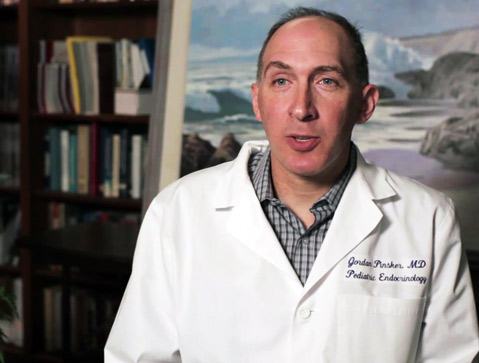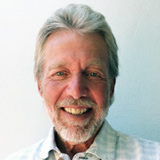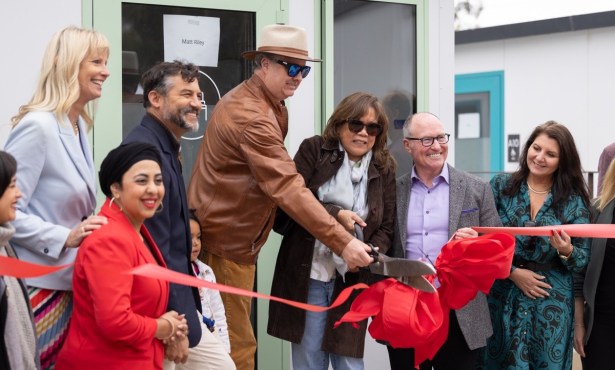Santa Barbara Synchronicity
Discovering Sansum After the Fact

If I’m reading the signs correctly, there should be a snare drum beside you. Please take a moment to play a paradiddle. You may now proceed.
I’ve been reading the autobiography of Bill Kreutzmann, drummer for the Grateful Dead, in which he frequently comments on all the synchronicity on the West Coast. For instance, they were once playing “Fire on the Mountain” about 50 miles from Mt. St. Helens when it began erupting. That’s some hot, smokin’ synch.

I reflected on this because Santa Barbara feels to me like a city of synchronicity. A Synchroni City. That feeling hit home hard soon after we moved here and discovered the William Sansum Diabetes Center.
At issue is Connie’s son Jackson, who was diagnosed with type 1 diabetes at age 3, started blood-testing himself at that same age, and has been on an insulin pump since age 4. He’s 16 now.
The embarrassing fact is this: We moved to Santa Barbara for the climate and the food, without even knowing about the Sansum Center, but synchronicity took care of that for us. (FYI: Both climate and food are crucial factors in managing a related autoimmune disease Jackson’s developed, called hidradenitis suppurativa (HS), which involves skin boils. We’ve learned that both HS and type 1 diabetes are linked to “leaky gut” issues, which is another big topic for another day. But if you have painful lumps where skin meets skin, please consider getting hold of a book called The Hidden Plague by Tara Grant. It tells all.)
Anyway, via synchronicity we basically stumbled upon Sansum and a doctor named Jordan Pinsker who is deeply involved in artificial pancreas research, which is the holy grail for people with diabetes, of whom there are many these days. Almost 30 million U.S. children and adults have type 1 or 2 diabetes. That’s 9.3 percent of the population, making it the most prevalent chronic disease in the country. If trends continue, as many as one in three will have diabetes by 2050.
(Yet more synch: In 2010 Jackson was narrator for the Juvenile Diabetes Research Foundation’s Almost Bionic film, about the artificial pancreas project – same thing Dr. Pinsker’s working on.)
So it’s a serious understatement to say the work going on in Santa Barbara is important. (Another fact we should have known: That work has been going on a long time. Dr. William Sansum was the first in the U.S. to inject a patient with insulin, right here, way back in 1922. In 1944 he founded the nonprofit that led to the Sansum center.)
The good news is that the research is bearing fruit. “Our hope is that within the next few years, artificial pancreas technologies will begin appearing in consumer devices,” said Dr. Pinsker. That technology will involve a closed-loop system that measures blood sugar levels and makes adjustments automatically, like a working pancreas should do. Actually, it’s not quite that simple. “There will still be a significant amount of user input,” the doctor said, “but the systems will greatly reduce the burden of diabetes management.” The devices, with their insulin pumps, continuous glucose monitors (CGMs), and computer chips, “will help interpret all the data coming in, help make dosing decisions and help maintain blood sugar in the target range.” Is that big? “Incredibly exciting,” is how Dr. Pinsker describes it.
(Note: Dr. Pinsker outfitted Jackson with a CGM recently, and Jackson will be taking part in a future Sansum research study.)
Circuitous would be a good word for the path that led Dr. Pinsker to Santa Barbara. Raised in New York, he attended Albany Medical College on an Army scholarship, for which he served 17 years in the Army medical corps, stationed everywhere from Iraq to Oahu. Last year he left his position as chief of pediatric endocrinology at Tripler Army Medical Center in Honolulu to come to Sansum as the clinical lead on artificial pancreas research. In that role he works with engineers from UCSB on technology advancements, runs clinical trials of devices, and also runs the pediatric diabetes clinic.
Actually, the teamwork goes far beyond Santa Barbara. Trials are funded by the National Institutes of Health, the Juvenile Diabetes Research Foundation, and some industry partners. “We collaborate with institutions around the world,” Dr. Pinsker said. Key among the collaborators has been the UCSB team, led by Professor Francis J. Doyle III and Dr. Eyal Dassau, whom Dr. Pinsker describes as “brilliant, passionate about improving care for people with diabetes, and great partners to work with.” That’s changing, but only geographically, because the UCSB team has moved to Harvard, where Professor Doyle became the dean of the School of Engineering and Applied Sciences on August 1.
What’s happening right here in Santa Barbara is enormous for people with diabetes and their families, and for people around the world. So it’s fair to say we were incredibly lucky to find it at the end of this rainbow.
Dr. Pinsker feels the same.
“It’s really exciting for this town,” he said. The Sansum Diabetes Center is “a small place, but we’re trying to do big things.”
Jeff Miller is a longtime New York newspaper writer and editor who now lives in Santa Barbara, writing books and songs.


